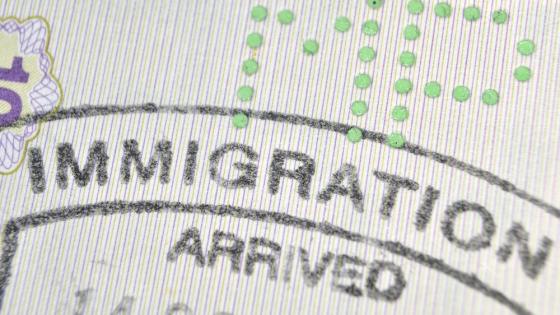One of the reasons why the welfare state in the US is much less generous than in western European countries is the greater diversity of the American population, a point raised for instance by Stephens (1979) and Alesina and Glaeser (2004). A large literature shows in fact that generosity, both public and private, is more freely extended within the same group (religious, ethnic, cultural, racial) rather than across groups.1
In recent years, due to a large influx of immigrants, European countries are becoming much less homogenous.2 Should we then expect a retrenchment of the welfare state in Europe? This is the question we ask in a recent paper (Alesina et al. 2019). Our answer to the question is possibly yes, but with important qualifications.
We examine how natives’ attitudes towards redistributive policies react to the arrival of immigrants in a sample of 140 regions in 16 European countries. Cross-country comparisons are inadequate to answer this question for two main reasons. First, we do not have enough observations (countries) to have enough statistical power. Second, immigrants’ choice of destination of may depend upon the generosity and the nature of the welfare state of the receiving country, which in turn depends upon the attitudes of natives about redistribution (Borjas 1999, Boeri 2010, Dahlberg et al. 2012).
To overcome these problems, we use data at the regional level. We investigate attitudes of natives living in regions which have received immigrants since 1990. We use country fixed effects, comparing regions within the same country. The assumption is that the welfare system of a country is relatively homogeneous across regions, and therefore the choice of location of immigrants within a country does not depend on the generosity of the welfare state. This assumption may not be a safe one in federal countries, but our results hold even if we exclude these countries. Matching and cleaning up these local data on presence of immigrants and natives’ preferences of redistribution was not an easy task, so one contribution of our paper is its data construction.3
Our findings
To begin with, we show that the larger the share of immigrants in a region, the larger the overall share of immigrants native perceive there to be in their country. This result is not surprising, perhaps, but it buttresses the idea of using local immigration data to assess preferences of natives about national policies such welfare.
Our main result is that in regions which have received a larger share of immigrants, natives show a lower preference for (i.e. are less favourable towards) redistribution even after controlling for many other factors which may affect these preferences. This result is very robust, and at the same time highly heterogeneous across countries, types of natives, and types of immigrants.
- The effect is stronger in receiving countries which have a more generous welfare state (e.g. Northern European countries or France) and weaker in countries with less generous redistributive policies. This may be because natives of countries with more generous social services feel that they are victims of the ‘welfare magnet’ phenomenon, i.e. the possibility that immigrants move to places where they can extract more social benefits.
- The effect is also much stronger for natives who classify themselves as to the right or at the centre in the political spectrum.
- Third, natives are more averse to redistribution when, holding constant the total number of immigrants in their regions, the share of non-European immigrants is larger. This suggests that the cultural, linguistic, religious or ethnic ‘distance’ of the immigrants from the receiving country matters for natives’ attitudes.
- Finally, the share of highly educated immigrants reduces the anti-redistribution effects on natives. This could be due either to the fact that tertiary-educated immigrants rely less on the welfare system, or because they are more assimilated and thus culturally closer to natives.
Policy implications
One policy implication of our findings is that left-wing parties will have a harder time attracting voters when they propose policies that are at the same time open to immigration and strongly redistributive. Their hardcore base will agree with such policies, but they will have a hard time attracting moderate centre-right voters.
A second implication is that we should see new parties proposing pro-redistribution policies and anti-immigration policies, and this seems to be the case for ‘populist’ parties such as the Rassemblement (ex-Front) National of Marine Le Pen in France, the Lega in Italy, or AfD in Germany.
Third, parties that are less favourable to redistribution may use immigration as a tool to promote less generous welfare policies, using the antipathy of voters towards immigrants. Alesina et al. (2018) document the very large degree of negative misinformation about immigrants, which is widespread in the few countries they study. Anti-immigration parties have an incentive to maintain and exaggerate this misinformation.
In conclusion, the traditionally socially generous and inclusive policies of European countries face the dilemma of natives favouring them for themselves but opposing them for immigrants. The solution is not easy, and extreme policies may at some point be proposed, such as discrimination against immigrants in terms of access to the welfare state.
References
Ager, P and M Brückner (2013), “Cultural diversity and economic growth: evidence from the US during the age of mass migration”, European Economic Review 64(C): 76-97.
Alesina, A, J Harnoss and H Rapoport (2016), “Birthplace diversity and economic prosperity”, Journal of Economic Growth 21(2): 101-138
Alesina, A, E Murard and H Rapoport (2019), “Immigration and attitudes to redistribution in Europe”, NBER Working Paper No 25562
Alesina, A and P Giuliano (2011), “Preferences for redistribution”, in Handbook of Social Economics, Volume 1, pp. 93-131.
Alesina, A and E Glaeser (2004), Fighting poverty in the US and Europe: A world of difference, Oxford University Press.
Alesina, A, A Miano, and S Stantcheva (2018), “Immigration and redistribution”, NBER Working Paper 24733.
Boeri, T (2010), “Immigration to the land of redistribution”, Economica 77(308): 651-687.
Borjas, G J (1999), “Immigration and welfare magnets”, Journal of Labor Economics 17(4): 607-637.
Dahlberg, M, K Edmark, and H Lundqvist (2012), “Ethnic diversity and references for redistribution”, Journal of Political Economy 120: 41-76.
Docquier, F, R Turrati, J Valette and C Vasilakis (2018), “Birthplace diversity and economic growth: evidence from the US States in the post-WWII period”, IZA Discussion Paper No 11802.
Stephens, J D (1979), The Transition from Capitalism to Socialism, Macmillan.
Endnotes
[1] For a review of the literature about preferences for redistribution which emphasizes this point see Alesina and Giuliano (2011).
[1] Birthplace diversity, i.e. the dimension of population diversity arising from immigration, can bring about important economic benefits (e.g. Alesina et al. 2016, Ager and Brückner 2013, Docquier et al. 2018).
[1] We assembled a new dataset on immigrant populations by origin country and educational level in 140 regions (NUTS) of 16 European countries. We did so by harmonising population censuses and population registers in the years 1991, 2001 and 2011.






